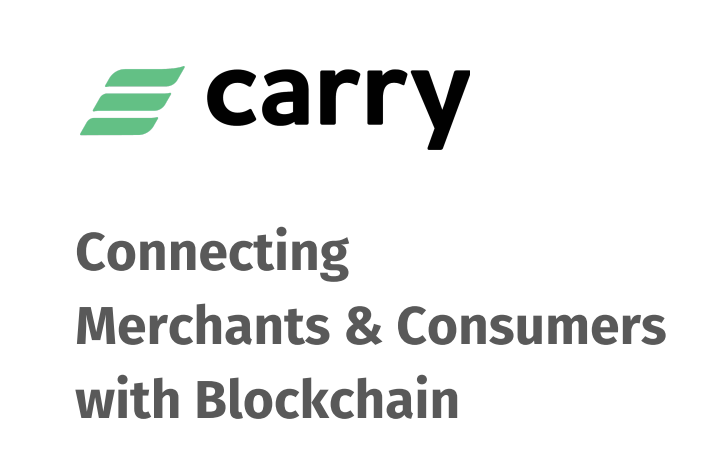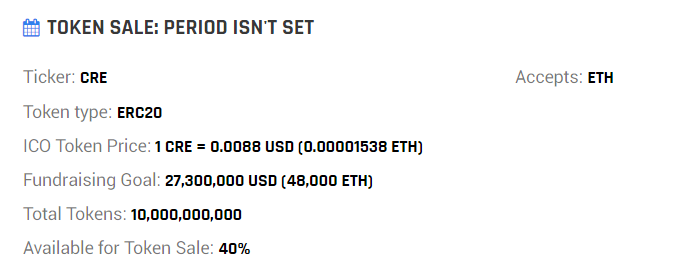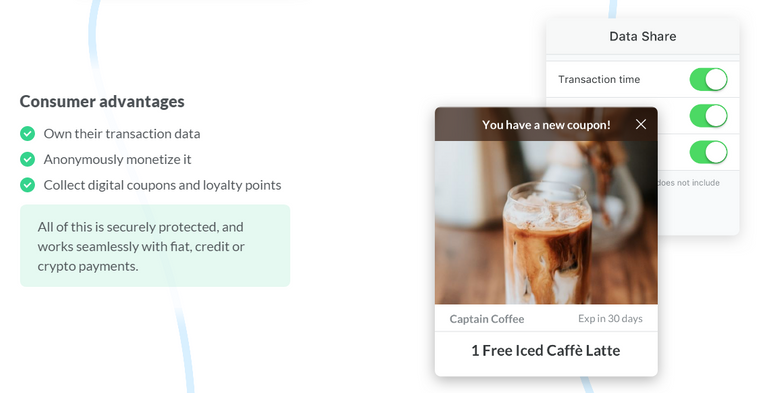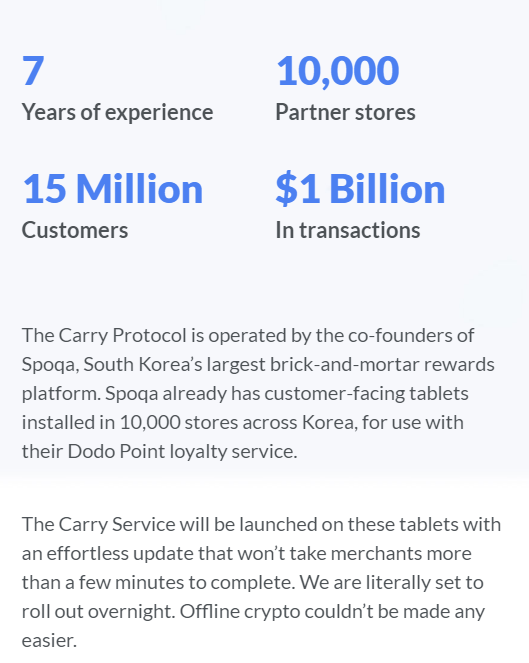
Till now, we all must have heard about this new project which has been creating some buzz in the ICO scene. So, here i am, writing about Carry Protocol.
Basic functioning:
The consumers are incentivized to share data on all of their transactions, and the marketers could access all of the data through a consolidated database. Simple, right?
Let's read on. (TLDR.!)
What does Carry Protocol do?
Carry is a platform that connects offline merchants and consumers using blockchain.
Using Carry Protocol, merchants will be able to issue Branded Tokens (BT) which serve similarly to loyalty points. Users can earn BTs simply by providing their phone number to the merchants when making a purchase.
Users can also earn CRE tokens or coupons when taking advantage of promotions or selling their personal data to advertisers/merchants.
There are two main components of the Carry Protocol, their blockchain and smart contracts solution, and their Carry Wallet and Carry Device APIs.
The Carry Wallet will be the main hub for the consumer, where the can scan stores' QR codes, make payments, and, if they choose, share their data with advertisers for compensation in the form of CRE, and BT that they receive from specific advertisements.
The Carry Device APIs will be for the store's end of things to provide support for in store devices, which will allow said devices to interact with the Carry Wallet, send it data, and BT.
For the backend, there will be the Carry Protocol blockchain, on which transaction data is stored, and will be interacted with when a customer makes a purchase, noting what they've purchased, the price, etc. This data will be strictly accessible by the customer in their Carry Wallet.
The team is also developing smart contracts that will be responsible for handling any automatic payouts/token transactions, and will also be used for minting BT for specific stores to use as loyalty points.
Consumers will be able to pay for services and goods with both crypto and fiat, but still benefit from the Carry Protocol even if paying with fiat. They will be able to scan a QR code, or share their device phone number and receive the same promotional deals or BT as if they were paying with crypto.
Let's see the Token Matrics which i have pulled out from their official medium account.

(Official Token Metrics as per their Medium post.)
The token metrics as per ICODROPS.
The token distribution will be as follows:
Now you know about the token metrics and their distribution. Now, the bigger question arises, What are these tokens be used for and how can we appreciate their value?
CRE tokens are going to be used for a number of things within the Carry Protocol.
On the merchant side of things, there will be a number of functions. To begin, the merchant is going to have to stake a certain amount of CRE for two things:
- The creation of BT
- Their use of the smart contract.
Depending on how much is staked, the merchant will be allowed a certain number of transactions/day. Another option here is a pay-as-you-go structure, paying CRE for each transaction.
From there, the tokens will be used as advertisement, incentive, and BT. Advertisers and shops will give/pay out a certain amount to consumers, and the consumers will use CRE or BT to pay for their purchases or receive discounts.
The value of these tokens hinges on the adoption of the project, in terms of users, merchants, number of check-ins, transactions, etc. The more adoption the project has, the bigger the network effect and the more valuable CRE tokens should be.
See these illustrations for a better understanding.
1. For Merchants
2. For Consumers
3. For Advertisers
Let's talk about the team now.
Team:
Carry Protocol was started by the co-founders of the Spoqa, and is backed by investors including Hashed, Kenetic Capital, Signum Capital, and XSQ, which are some of the best investing groups in the crypto scene.
The biographies of key team members are listed below:
Grant Sohn, co-CEO - Worked as a business analyst for McKinsey and Co, business consultant for Sohn Consulting, and managing director of Asia for Wimdu GmbH before co-founding Spoqa.
Richard Choi, co-CEO - Master's degree in engineering from Cornell, researcher at SK Chemicals before co-founding Spoqa in 2011. Co-founder of Carry Protocol.
Swen Mun, Lead Developer - Full stack programmer with experience in database protection and encryption. Software developer at Spoqa for 5 years before becoming the CTO in 2017.
Jungwong Yu, Head of Business Development - Team manager at Cyworld and Daum Communications, senior manager at Naver Corp and Yahoo. Founder and CEO of Ensight Media and director at GS Shop before becoming head of business development at Carry Protocol.
Advisors for Carry Protocol include Simon Kim, CEO and partner of Hashed, Ryan Kim, chief acceleration officer and partner at Hashed, and David Park, product leader and management consultant for companies including Facebook, Nextdoor, and McKinsey & Co.
Concerns
· In terms of blockchain development, the project is still at an early stage and there is no MVP/proof-of-concept released yet.
· The roadmap is pretty vague, so we cannot gauge the level of planning the team has regarding achieving major milestones. But the CEO, Grant Sohn, replied to this issue raised by many members on the official telegram group by saying:
“We’d rather over deliver than over promise and under deliver. Offline retail requires a lot of upfront development but the reward is huge (10x larger than online in terms of size).”
So, let’s take the man for his word and wait and see how this all plays out.
Conclusion
All i am going to say is that i like the project i am planning to invest in it but you should do your own research before investing. If you like the project then invest, if you don't like it then just don't invest.
For more information about the ICO, you can visit the following links:
Website: https://carryprotocol.io/
Whitepaper: https://carryprotocol.io/static/docs/Carry_protocol-white_paper%28ENG%29.pdf
Blog: https://medium.com/@carryprotocol
Telegram: https://t.me/carryprotocol
- The information contained in this article is for education purpose only and not financial advice. Do your own research before making any investment decisions.*







